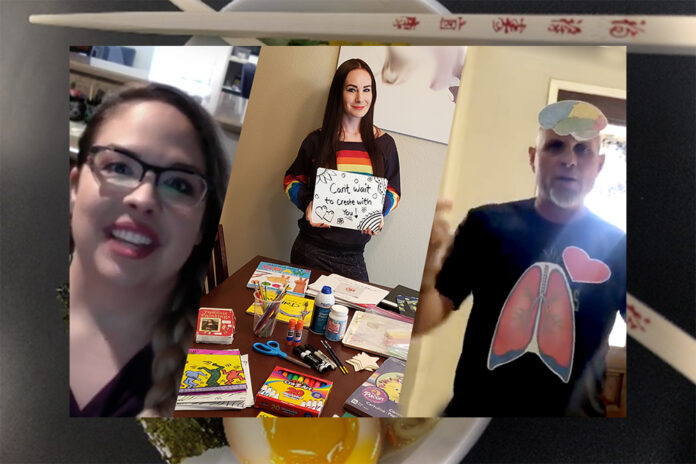
“This is a crazy time, and I don’t think any of us expected to ever be teaching like this.”[pull_quote_right]The things that our kids are concerned about go from funny to heartbreaking.[/pull_quote_right]
Stephanie Arturet is one of hundreds of Maricopa teachers who made a dramatic shift to educating their students online for the last two months of the school year to mitigate the spread of COVID-19. A third-grade teacher at Santa Cruz Elementary School, she is also helping her own children with their online classes at home.
“It’s not easy, especially while I’m doing school with my own two kids, both of whom are MUSD students,” she said. “But we want the best for our students and are figuring it out as we go.”
Shannon Hull, who teaches Blended Learning at Desert Wind Middle School, said the toughest impact of not returning to school was the lack of closure and not getting to say goodbye to students and staff.
“When teachers found out we were closing the doors for the rest of the school year, the first thought was not about math or English or science; it was all about the end-of-year field trips, the graduations, the promotions, prom, senior nights for baseball, softball and track, etc. – all these life events that our seniors will now miss. All of the end-of-year activities we all plan for our students are now gone.”
Instead, everyone had to find a way to stay connected and keep teaching. Everyone went virtual.
Posting videos on Google Classroom and communicating with students and parents via ClassDojo are the new normal. Maricopa Unified School District purchased workbooks for all students in math and English with a schedule for completion by the end of May. After a Santa Cruz staff meeting to clarify the dos and don’ts, Arturet created a calendar and activities.
“I also want to post some videos about content we would be covering now, math especially, and assigning some practice activities, games and challenges to put those skills to use,” Arturet said. “I’ve posted a multiplication fact game through Kahoot.com for students to compete in and plan to do this a couple times a week. It’s an activity we use in class a lot, and they love the competition aspect.”
Some classes demand a little more tactile activity, such as cooking, physical education, art and music.
[pull_quote_center]When I open my email now, it is from a student, and they are sharing their cooking pictures with me. So awesome.[/pull_quote_center]
For Sequoia Pathway students, culinary coach David Smith basically hosts his own cooking show. The class preps for a new recipe during the week, seeing a video on the dish and reading an explanation of the recipe and ingredients.
Then Thursday is cooking day, or, as Smith puts on his lesson calendar, COOKING DAY! That is when he posts his full cooking video so students can watch before they start cooking at home.
“I like to make my cooking videos fun and engaging so they will hopefully be inspired to cook something during this time,” Smith said. “So far, the students are responding very well. When I open my email now, it is from a student, and they are sharing their cooking pictures with me. So awesome.”
Paul Krigbaum, who teaches PE at Maricopa Elementary School, said reaching students is the biggest challenge. He also uses ClassDojo.
“I could make a calendar, but how do I know they’re actually doing that?” he said.
So, he created 5-7-minute videos every day of workouts the students (and their parents) can do at home, knowing most will not have the same equipment at the house that they would have at school. He posts them on his “Get Fit with Coach K” Facebook page, and parents respond by posting photos or videos of their children working out.
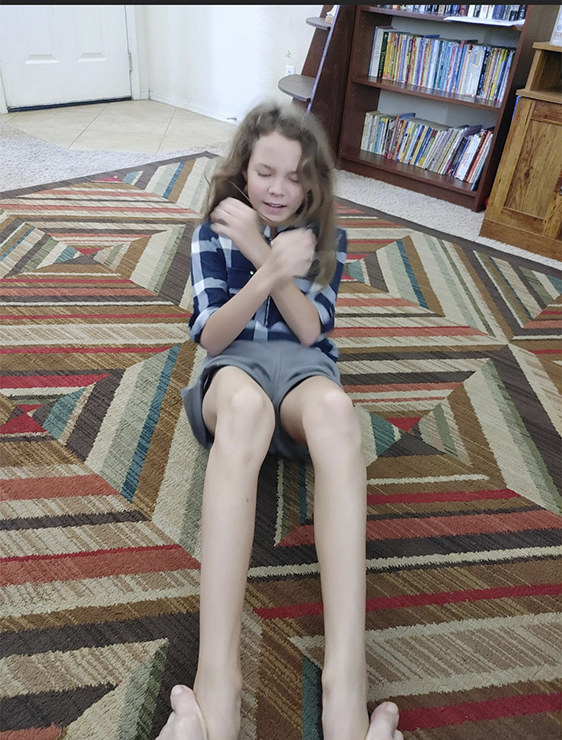
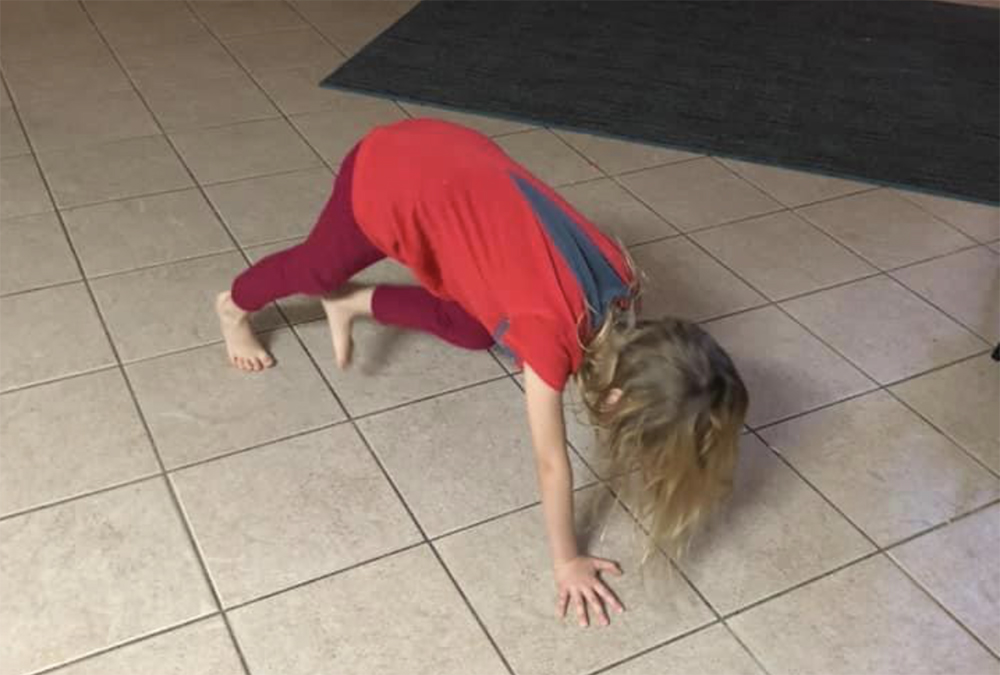
A Tobata workout will have throwing and tossing. Kids have created their own exercise course with sidewalk chalk. Krigbaum has created a ball from duct tape for a game of hamper ball. He’s been happy to see 110-200 views a day. His exercise challenges have prizes of jump ropes and Gatorade.
He sees ways to incorporate what he is doing temporarily into his regular lesson plans when “normal” school begins again.
Pima Butte PE teacher Jesus Leyva also set up his students with a program and videos.
“I’ve created a Google Classroom where I post weekly skills that students will be working on for that week,” he said. “I have also created YouTube videos to accompany the skills being taught for the week. This provides the students an opportunity to see me give instruction on their iPad, tablet, laptop or electronic device that they are accessing their lessons with. The students post their comments and share their thoughts on the Google Classroom page.”
[pull_quote_center]Hopefully, that leads to more independent musicianship for students and more at-home practice, which is a top goal for any music educator.[/pull_quote_center]
Music teacher Ivan Pour also sees a future for elements of the distance-learning curriculum beyond the pandemic.
“I’ve been wanting kids to use SmartMusic more and this is an opportunity to get more kids connected and comfortable on the system,” said Pour, who chairs the Fine Arts Department at Maricopa High School. “I’m also learning a lot about making videos and live online events. Since I’m more comfortable with it, when we get back, I will probably have a more robust selection of online resources for them to use at home than before. Hopefully, that leads to more independent musicianship for students and more at-home practice, which is a top goal for any music educator.”
SmartMusic, which has made its entire catalogue free, is an online practice platform Pour calls “a very cool practice resource.” Band students are expected to use their time working on their individual playing. They have two assignment each week, one a playing assignment and one “virtual concert attendance” using streaming platforms to watch symphonies, bands, opera, etc. Pour encourages them to listen to music they normally don’t hear or play.
Pima Butte Elementary art teacher Ellen Zoretic uses Google Classroom, ClassDojo, email and phone calls to stay connected to her families.
“In my Google Classroom I post videos I’ve recorded of myself teaching the students art lessons as well as reading them art books,” Zoretic said. “I have an extra activity section where I have uploaded links to art games online, printable coloring pages, virtual museum tours and other ideas to keep busy and be creative.”
One of those ideas was creating a color-wheel challenge. Students had to find household items of every color of the rainbow and put them in a circle in their categorized color ranges. “They loved that project!”
She found another way to keep students engaged by reading Diane Alber’s “I’m Not Just a Scribble” while her bird sat on her shoulder as a special guest. She maintains Facebook and Instagram accounts to connect and show student artwork.
“One thing that I think is interesting is that our Blended Learning students at both middle schools are at a distinct advantage with the new online learning that is now happening across the nation and world,” Hull said. “Our students already received their schoolwork online, so this doesn’t change. Our students are also already used to doing research on their own and not needing that direct instruction that most teachers do on a daily basis.”
What’s changed is Hull is teaching her Blended Learning students from her computer table at home instead of in a classroom. She’s making WeVideo math content to post on Google Classroom. In language arts, weekly assignments include blogs or vlogs, where students can express themselves in a safe environment.
“And the things that our kids are concerned about go from funny to heartbreaking,” she said. “Most are concerned about food in the house, parent’s jobs, taking care of siblings, worrying about grandparents’ health. But the biggest thing our students talk about is not seeing friends and teachers and wondering if we will see each other at all before school starts next year.”
At Maricopa Wells Middle School, seventh and eighth grade history teacher Shelby Rostas keeps her students engaged with daily tasks using Google Classroom.
- Multi-media Mondays
“I will post a video for you to watch and respond to, a movie that I suggest you watch (if you can find it on Netflix, Amazon Prime, or Youtube), a short video called “This Week in History” as well as the CNN10 for the day.” - Time Travel Tuesdays
“I will post a short reading comprehension article on topics that cover the basics of American History with a few questions to answer, a virtual field trip for you to explore and comment on, and the CNN10 link for the day.” - Wacky Wednesday Writing
“I will post a journal prompt for you to respond to as well as the CNN10 link.” - Thankful for Thinkers Thursday
“I will post a short biography on someone from history with questions for you to answer, and the CNN10 link for the day.” - Fun Fact Friday
“I will post a fun fact and ask you to do some independent research to discover the 5W’s & H on each topic (Who did it impact, What is important about it, Where was it created or happening, When it was created or happening, Why it matters now, and How it has impacted society), as well as the CNN10 link for the day.”
Graphic design teacher Maria Pour said she wants her MHS students to feel they are at least connected with her. It’s been a learning experience for her, too, as she created her own YouTube channel, showing students her home studio and posting enrichment lessons.
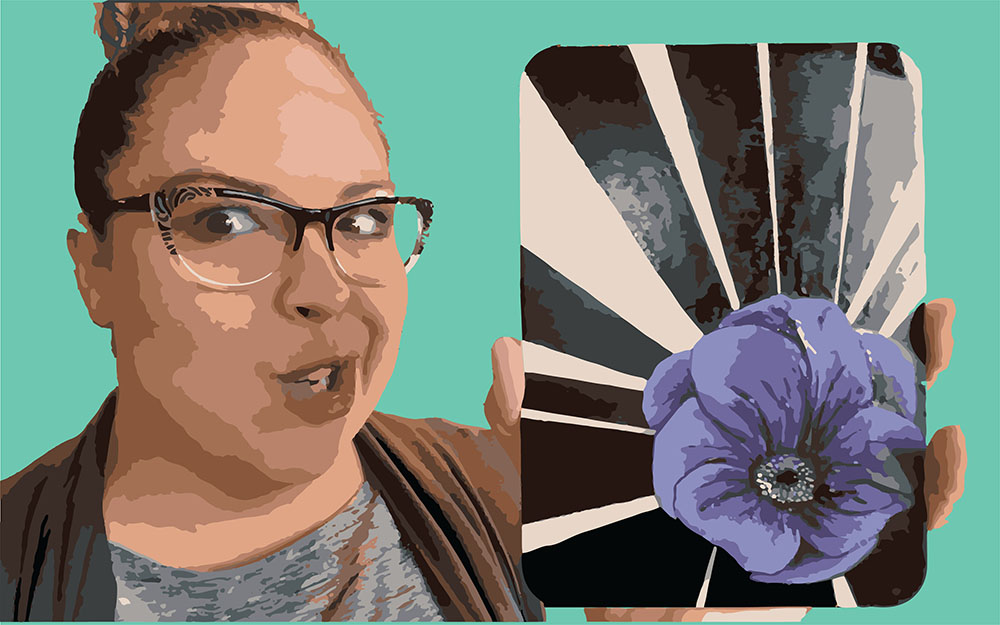
“Throughout our entire school year, we’ve used Google Classroom to submit student work, so that has continued as usual and offered the students some stability when it comes to Graphic Art & Design,” she said.
Through the school’s main software vendor and in-house information-technology expert, students were set up with the Adobe Creative Suite at home. Maria Pour said that gave her graphic designers a creative outlet and opportunity to master technical skills.
“I’ve done a Livestream for my students, which felt awkward for me until my students began submitting comments, feedback and jokes through my e-mail,” she said. “It was a wonderful way for me to feel connected to them again.”
[pull_quote_center]I make sure and leave a personal note for them, to let them know I appreciate their work.[/pull_quote_center]
Enna Post is the K-5 technology teacher at Saddleback Elementary. She normally would see students twice a week 30 minutes at a time.
“Now with the Distant Learning method, I’m reviewing their computer skills, combining files and video tutorials,” she said. “When students finish and turn in their work, I can see it in Google Classroom. I make sure and leave a personal note for them, to let them know I appreciate their work.”
The program allows her to explain and show the students basic skills like copy/paste and text editing. They can hear her voice and follow along as she moves objects or creates graphics.
Hull said the technology aspect of Blended Learning may get new attention when this vast experiment is over.
“I think now more people will look to our Blended Learning model of how to better integrate online and in-person teaching for the new world we live in.”
Old-fashioned communication still has a place, too. Arturet said she is continuing to connect with kids the way she always has, even by “snail mail.”
“I’ve mailed all of my class postcards and plan to do that every two weeks or so,” she said. “It’s something I do during the year sometimes, and they’re always super excited to get their own mail.”
More than anything, teachers want to see their kids in person again.
“All this is keeping us moving in a bad situation,” Ivan Pour said. “Nothing is the same as in-person ensemble rehearsal. It’s not the same. I can’t wait to run a full rehearsal with my students again. I miss them.”
This story appears, in part, in the May issue of InMaricopa.
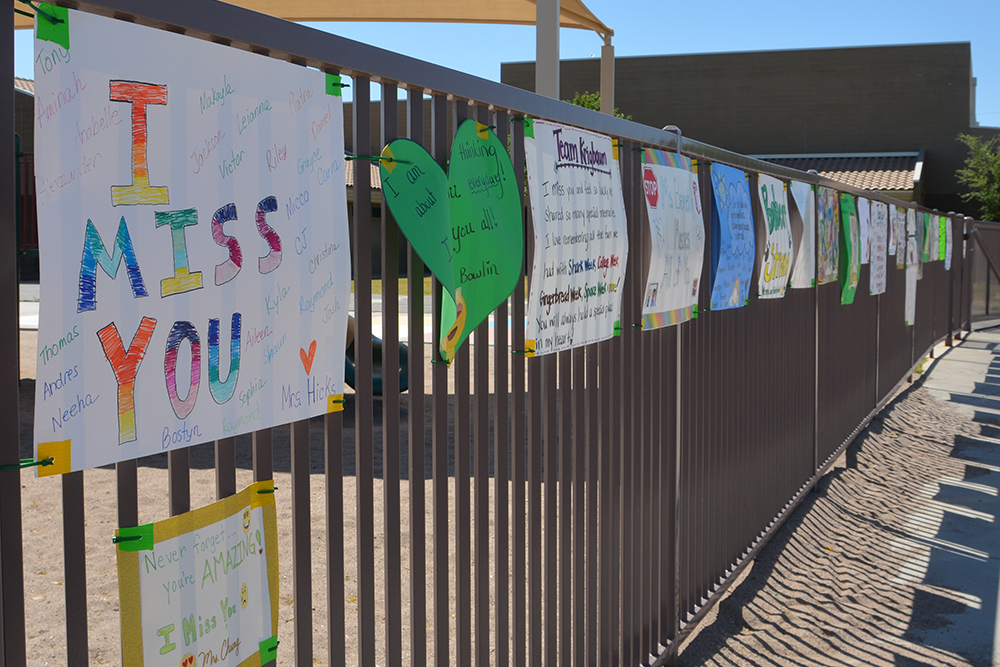
To continue to grow our local coverage of COVID-19’s impact on Maricopa in the difficult weeks to come while continuing our day-to-day newsgathering, we are partnering with the Local Media Association’s foundation to ask our readers to help with a tax-deductible donation at GiveButter.com/inmaricopa.


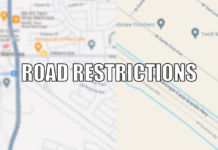

![City gave new manager big low-interest home loan City Manager Ben Bitter speaks during a Chamber of Commerce event at Global Water Resources on April 11, 2024. Bitter discussed the current state of economic development in Maricopa, as well as hinting at lowering property tax rates again. [Monica D. Spencer]](https://www.inmaricopa.com/wp-content/uploads/2024/04/spencer-041124-ben-bitter-chamber-property-taxes-web-218x150.jpg)

![3 things to know about the new city budget Vice Mayor Amber Liermann and Councilmember Eric Goettl review parts of the city's 2024 operational budget with Mayor Nancy Smith on April 24, 2024. [Monica D. Spencer]](https://www.inmaricopa.com/wp-content/uploads/2024/04/spencer-042424-preliminary-budget-meeting-web-218x150.jpg)





![Alleged car thief released without charges Phoenix police stop a stolen vehicle on April 20, 2024. [Facebook]](https://www.inmaricopa.com/wp-content/uploads/2024/04/IMG_5040-218x150.jpg)




![City gave new manager big low-interest home loan City Manager Ben Bitter speaks during a Chamber of Commerce event at Global Water Resources on April 11, 2024. Bitter discussed the current state of economic development in Maricopa, as well as hinting at lowering property tax rates again. [Monica D. Spencer]](https://www.inmaricopa.com/wp-content/uploads/2024/04/spencer-041124-ben-bitter-chamber-property-taxes-web-100x70.jpg)